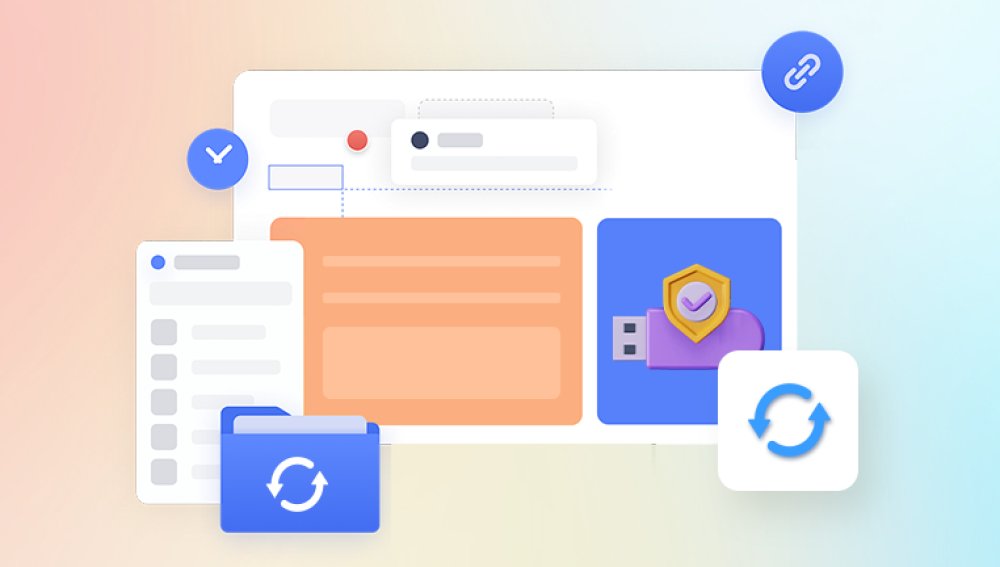Blink security cameras, a product line by Amazon, are widely known for their affordable pricing, wireless functionality, and seamless integration with home automation systems. These smart devices are essential tools for home security, enabling users to monitor their surroundings in real time and access recorded clips via the Blink app. However, like any digital data system, users occasionally face scenarios where clips get deleted accidentally or due to system malfunctions. This loss can be particularly distressing if the footage is tied to important events or potential security incidents.
1. Cloud Storage via Blink Subscription
When you subscribe to the Blink Plan or Blink Plus Plan:
Your video clips are stored in Amazon's cloud servers.
Clips are retained for up to 60 days (in the U.S.) before being automatically deleted unless you manually delete them first.
Once a clip is deleted (either manually or after the retention period), it is permanently removed and cannot be recovered from the cloud.

2. Local Storage Using Sync Module 2
If you’re not subscribed to a Blink plan but use a Sync Module 2:
You can use a USB flash drive to save recordings locally.
This gives you direct access to saved clips via a PC, even if deleted from the Blink app (as long as they haven’t been overwritten).
3. Live View and Motion Clips
Clips are generated through motion detection or on-demand Live View. These files are either saved to the cloud or locally, depending on your system.
Can You Recover Deleted Clips?
In most cases, once a clip is deleted from Blink cloud storage, it cannot be recovered through the app or official support channels. However, there are some nuances:
A. Accidental Deletion from Cloud (Subscription Plan)
Blink does not offer a recycle bin or undo feature.
Deleting a clip is permanent.
Contacting Blink Support is unlikely to result in recovery as Amazon’s servers immediately purge deleted data.
B. Local Storage via USB (No Subscription)
If using local storage, deleted clips might still be on the USB drive until they are overwritten.
In this case, data recovery software may be able to retrieve deleted clips if they haven’t been replaced by new data.
Methods to Recover Deleted Blink Clips
1. Check the Clip Roll or Timeline Again
Sometimes, users think a clip was deleted when it was simply misplaced or not downloaded properly.
Open the Blink app.
Navigate to the “Clips” tab.
Filter by camera and date range.
Refresh the app or log out and back in.
2. Inspect Local USB Storage (For Sync Module 2 Users)
If you're storing clips locally:
Remove the USB drive from your Sync Module 2.
Connect it to a computer.
Use File Explorer (Windows) or Finder (Mac) to manually browse stored files.
Look for deleted or hidden folders.
Tip: Blink’s file structure uses recognizable filenames such as CAMERA_NAME_DATE_TIME.mp4.
3. Use Data Recovery Software on USB Drives
Drecov Data Recovery
Drecov Data Recovery is a user-friendly software designed to help individuals and businesses retrieve deleted files from a wide range of storage devices. Whether you’ve accidentally deleted important documents, lost precious photos, or experienced data loss due to formatting or corruption, Drecov Data Recovery offers a reliable solution that doesn’t require technical expertise.
The software supports recovery from hard drives, USB flash drives, SD cards, external drives, and even formatted or corrupted partitions. With its intuitive interface, users can scan their devices quickly and preview recoverable files before initiating the recovery process. This helps in selecting only the data you truly want to restore, saving time and storage space.
One of the standout features of Drecov Data Recovery is its deep scan mode, which digs through your device’s storage to locate fragments of deleted files that other programs might miss. This is particularly helpful in cases where files were deleted a long time ago or when the file system has been severely damaged.
4. Check Other Devices (Downloaded Clips)
If you downloaded or shared the clip:
Check your smartphone’s gallery or download folder.
Look in cloud backups (Google Photos, iCloud, OneDrive).
Search email and messaging apps where you might have shared the clip.
Third-Party Tools and Expert Services
If the lost clip is critical and you cannot retrieve it using the above methods, consider:
A. Professional Data Recovery Services
Services like:
Ontrack
DriveSavers
Secure Data Recovery
These can perform forensic-level recovery on USB drives if local recovery fails. While expensive, they can be worthwhile for legal or investigative purposes.
B. Forensic Video Recovery
In rare cases (such as court-related footage), law enforcement or digital forensic experts may attempt to recover data from a backup system or secure server, though this typically requires a subpoena and cannot be done by individual users.
Limitations and Challenges
Despite your best efforts, recovering deleted Blink clips has inherent challenges:
Cloud deletion is final. Blink does not keep shadow copies or backups.
No trash or recovery feature within the app.
Local storage is limited and files can be easily overwritten.
No native export log showing when files were deleted or by whom.
Preventing Future Data Loss
To minimize the risk of losing important footage, consider the following proactive measures:
1. Enable Auto-Save or Download Regularly
Manually or automatically download important clips as soon as they’re captured:
Blink app > Clip > Tap Share icon > Save to device
2. Set Extended Retention Periods (For Subscribers)
While the max is 60 days, routinely downloading or exporting important footage prevents deletion due to expiry.
3. Use Local + Cloud Hybrid Storage
By using both Blink subscription and a USB drive with Sync Module 2. you create redundancy.
4. Increase USB Capacity
Using a high-capacity flash drive (e.g., 64GB or 128GB) gives you more time before old files are overwritten.
5. Regular Backups
Create monthly backups of the USB drive contents to a computer or cloud storage.
6. Use Third-Party Smart Home Recorders
Some advanced users route Blink feeds into external systems like:
Amazon Alexa routines that trigger additional cloud recordings
SmartThings integrations
Third-party apps that capture live streams (limited availability)
Alternative Options for Critical Footage
If the footage was tied to a serious incident (e.g., burglary, vandalism), here are some additional tips:
A. Ask Neighbors
If your Blink footage is lost, nearby security systems (including Ring or Arlo cameras) may have captured the same event. Request footage via:
Neighborhood groups
Nextdoor app
Police or community watch programs
B. Check Alexa History
If Blink is integrated with Alexa, any Live View commands or voice interactions may be logged.
C. Contact Blink Support
While they won't recover footage, they might clarify:
Why a file was deleted
If a recording failed due to motion settings or sync issues
Legal and Privacy Considerations
Before attempting any recovery method:
Ensure you are authorized to access the Blink account or device in question.
Do not attempt to hack into cloud servers or bypass system restrictions.
Respect any privacy laws regarding surveillance footage.
Summary: Can You Really Recover Deleted Blink Clips?
Blink cameras offer accessible and reliable home surveillance, but like any digital storage system, they are not immune to data loss. Understanding the limits of what you can recover and acting quickly are key to successfully retrieving lost clips. While recovery from the cloud is not an option once deletion occurs, those using local USB storage may still have a chance with the right tools.




